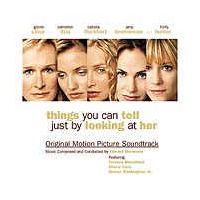NEW YORK STORIES
A) LIFE LESSONS, Directed By Michael Scorsese
B) LIFE WITHOUT ZOE, Directed by Francis Coppola
C) OEPIDUS WRECKS, Directed by Woody Allen
1983, 119 Minutes
Source: New York Stories ( DVD)
All of the aforementioned films are a part of omnibus entitled New York Stories. The theme is the life and times of very different people living in New York. We will explore the three characters and what makes them unique to New York.
In the first story of this triptych, Nick Nolte plays an establised artist, Lionel Dobie, working on a huge piece of canvas with a bare bones beginning of an idea. He is interrupted by his agent played by Patrick O’Neal, who is encouraging him complete the work. Dobie explains that it will have to wait until he retrieves his incompetent girlfriend from the airport. Now, we have a clue into his state of mind.
His girlfriend (Rosanna Arquette) is furious at him for showing up at the airport after she left a message on his answering machine that she wantd to leave him. By ignoring her request, Dobie is giving Paulette (Arquette's character) a backhanded clue as to his concern, or lack thereof, for her feelings. He continues with this mental abuse by alternately professing his love for her with bursts of insanity, characterizing himself as a lion among men.
His canvas is changing like Dorian Gray’ picture, reflecting his feelings towards Paulette. Unbeknownst to him, she watches him as he unabashedlyt splashies vibrant reds, smiling yellows and serene blues. The canvas is alive with passion, with good cheer and with serenity. It’s the changing faces of Lionel Dobie.
At Lionel’s next show,s we discover that Paulette has left him as though he is a failure. An ardent young woman enthusiastically introduces herself as new to the area, an aspiring artist barely making ends meet He tentatively suggests that could hire her as an assistant. The position doesn't pay much, he explains, just room and board.
I have never seen a short, romantic film directed by Martin Scorsese. I expected to see shooting, gangsters, people lying dead in the street. Figuratively speaking, that is what we saw in this scenario. Egos, dreams, and expectation are instead being shot down and left lying in the streets. Things that life lessens.
In Francis Coppola’s A Life with Zoe, we see another side of New York. When I think of New York I think of fantastically wealthy people inhabiting the city. What one doesn’t realize is that these “people” were actual children at one time, like Zoe. Her father, Carlos Montez, is a famous flautist who serenaded her in her crib. Her mother, Charlotte Montez (played by Talia Shire), is the most beautiful author who jet sets all over the world.
Her dream life has attending an exclusive school with equally wealthy children. One of whom is a rich, friendless boy that Zoe encourages to imagine a similar fantasy life, such as her own. Imagination is available to all, friend will find YOU.
Her father and mother reappear to tell Zoe that they are getting a divorce. In typical Coppoola fashion, however, namely a happy ending, the divorce doesn’t take.
New York Stories’ device is as a dream told to pyscharist by patient, Sheldon Mills shortened from Millsteins, (Woody Allen) after his mother is dead. He introduces Sadie, his mother, to Lisa, his fiance (Mia Farrow) at a magic show that that would be a family-friendly venue. The magician selects Woody’s mom out of the crowd to assist him in a classis box trick. The trick fails and hilarity ensues.
For the next three days, in a frantic effort of searching for his mother by using a private investigator, he is totally distraught. He even employs the services of a medium, Treva Marks (Julie Kravitz) though, unbeknownst to him, she is truly an amateur. However, for every step backwards there is a step forward. His lagging libido has been re-energized by the absence of his mother’s constant carping and criticism. His sex life is back on track.
Instead, she appears three days later as a humongeous cloud in the sky, from which she lectures him in front of traffic, causing a huge jam in the middle of New York City, as if that never happens in New York City. She also talks to people in the street as though she was right there, producing pictures on demand of Woody as a child, whereupon the other pedestrians produce pictures of their children and now the sidewalks are jammed.
When he tells his mother’s face that his girlfriend has left him because she cannot handle the duress of his mother’s absence, his mother miraculously reappears in his living room. Also there is the medium, Treva Marks( Julie Kravitz) who has admitted this she doesn’t know what she is doing as far as the occult is concerned, but she can cook. She’s even offered left-overs to Woody to take home, since she realizes that he cannot do for himself. (His life has been sheltered and provided for by his mother.)
This section movie is very typical of Woody Allen in the 1980s. He is very self-effacing and self absorbed but he finds the humor in situations, even though somehow I always got the feeling that these were situations he created in his own mind. There is a very dark side to his humor that I like. I hadn’t seen a Woody Allen film in awhile, so this was a refreshing retrospective.
submitted by Debbie Zukas
